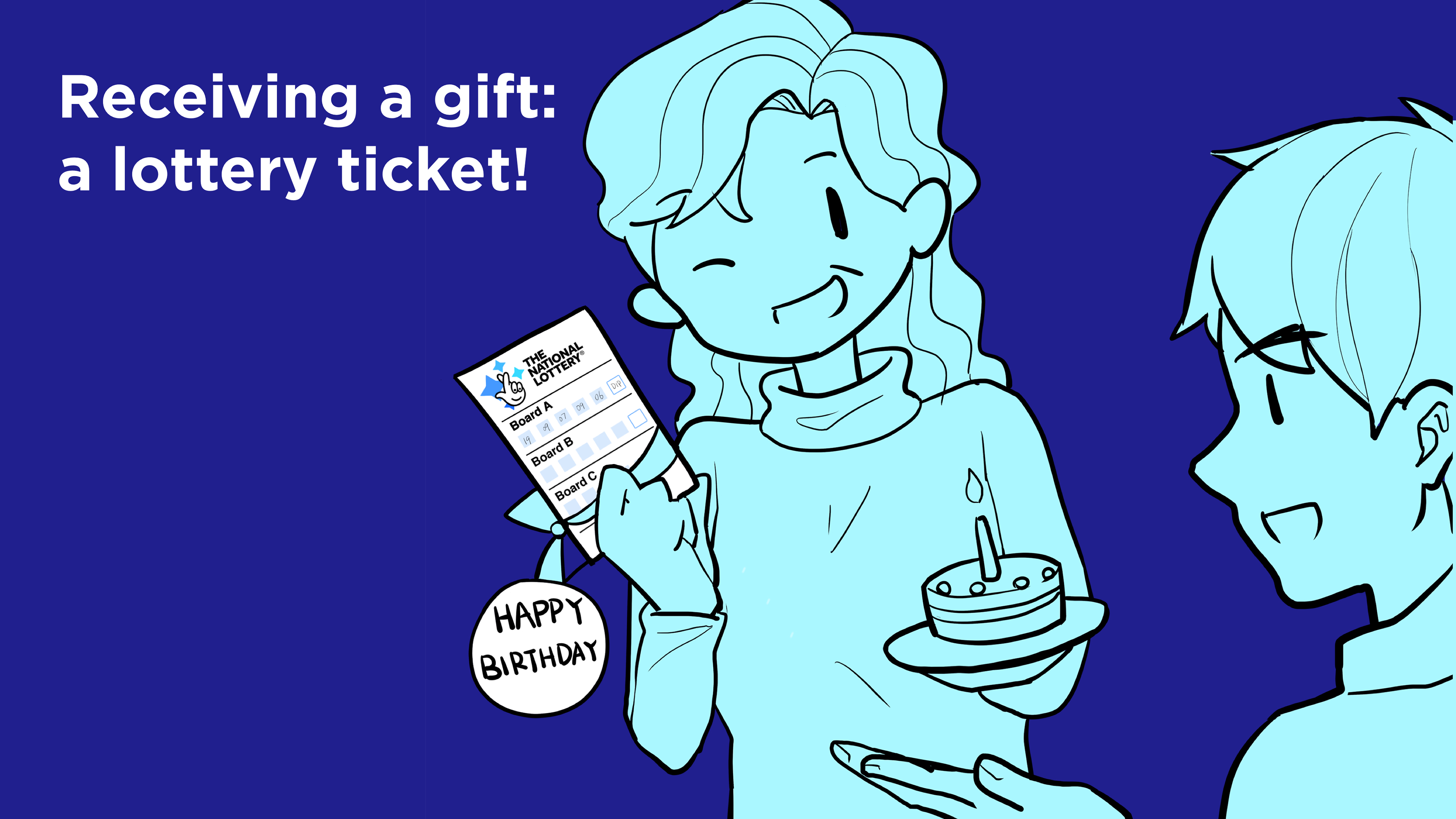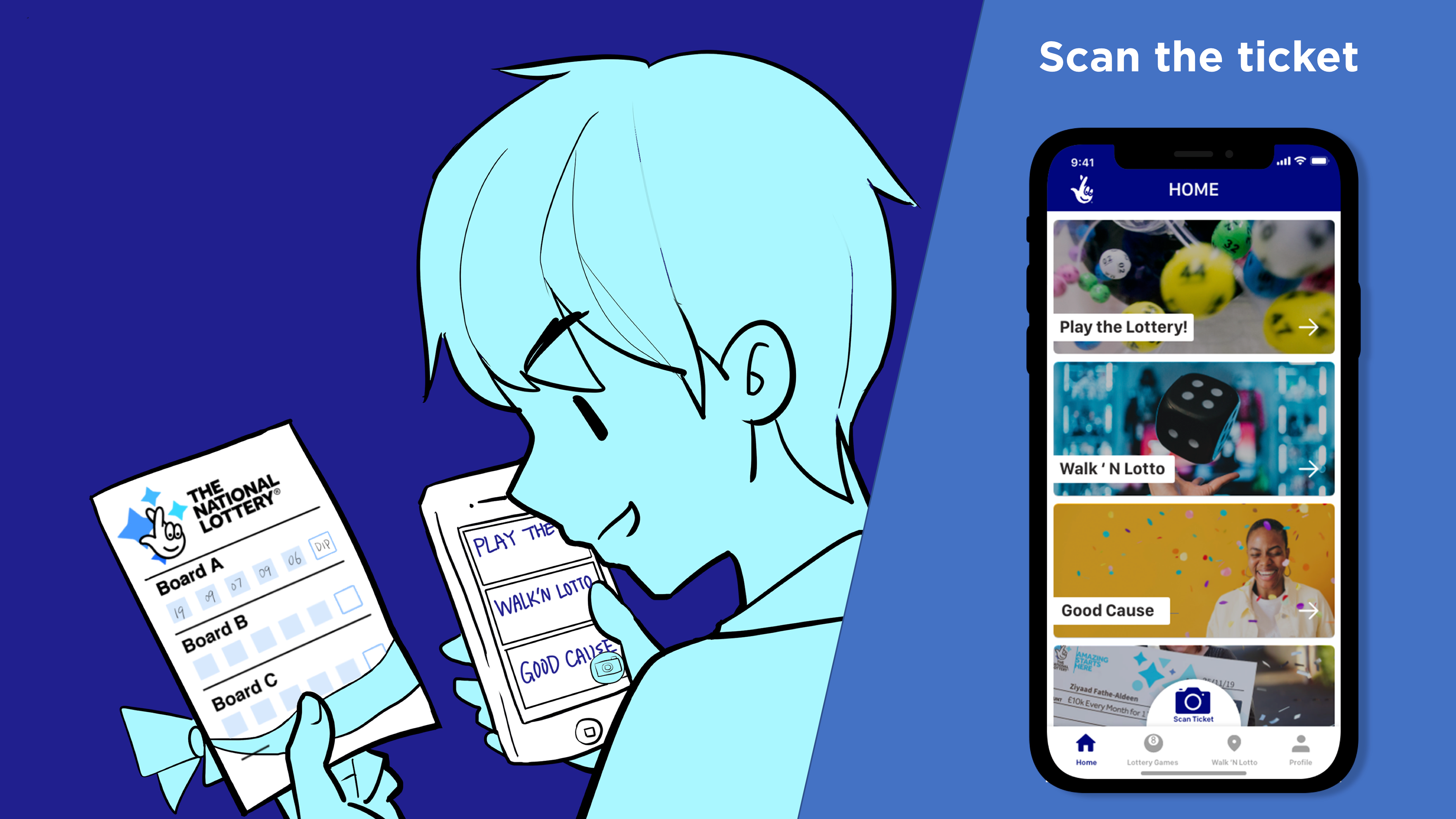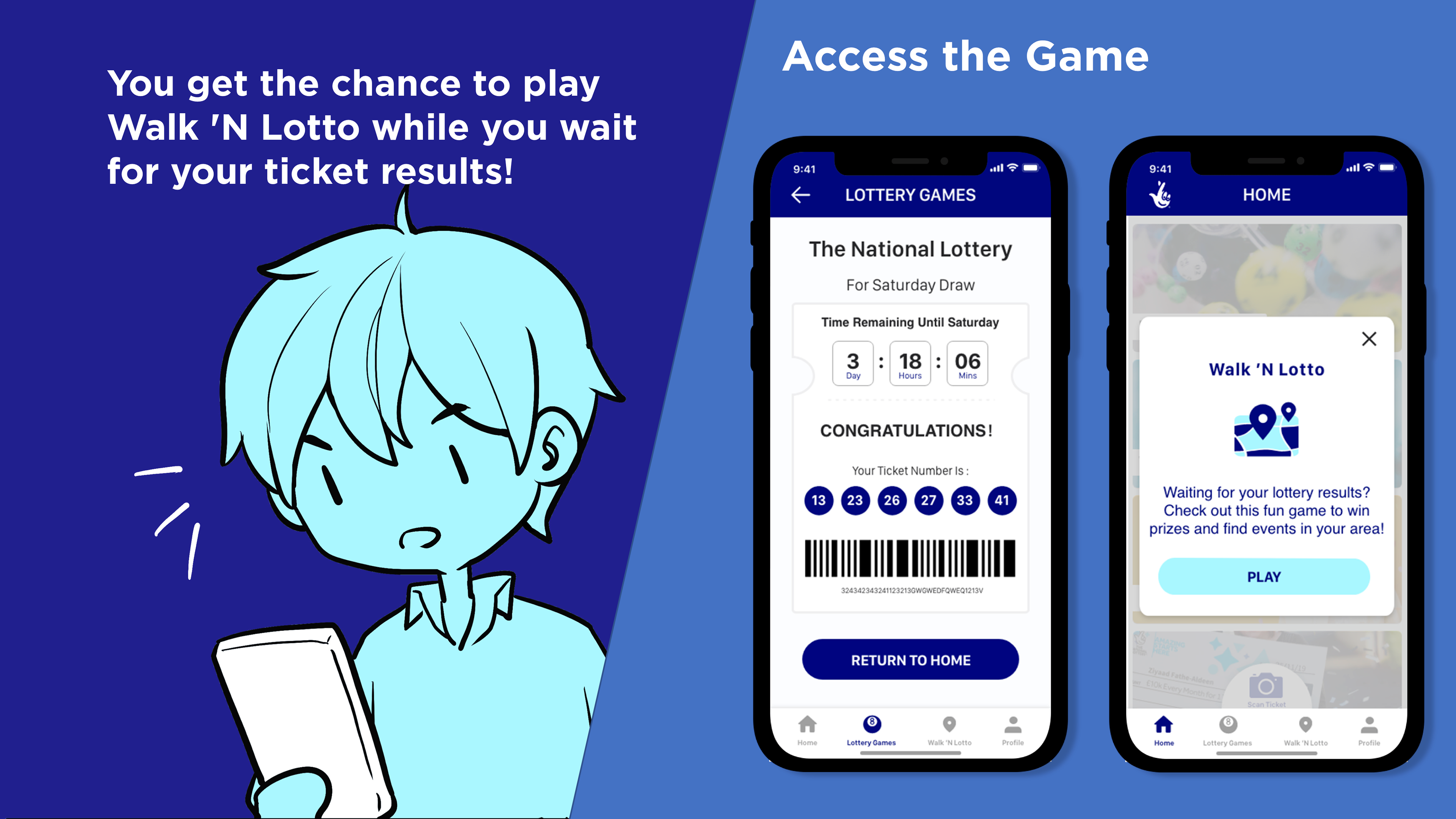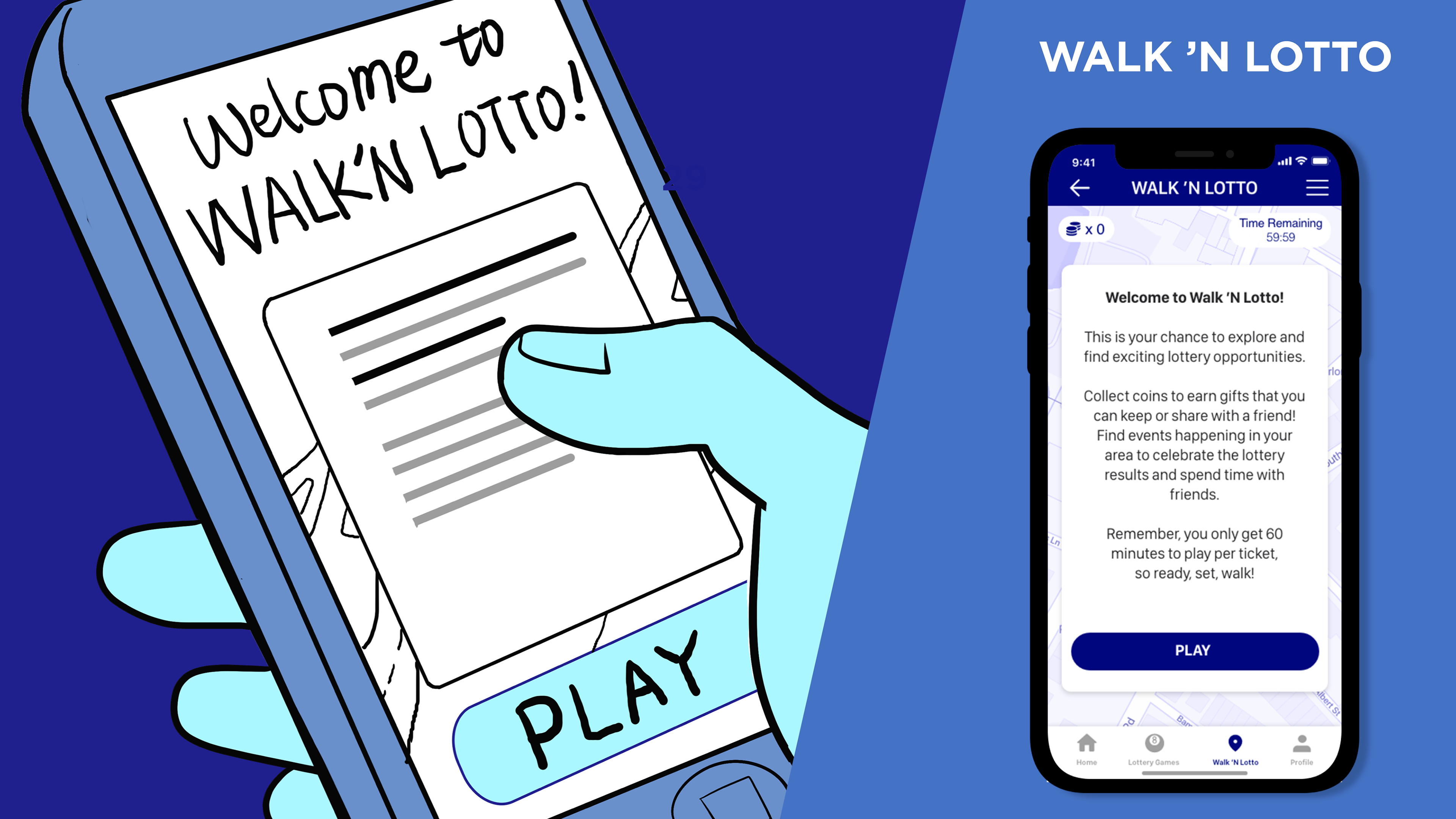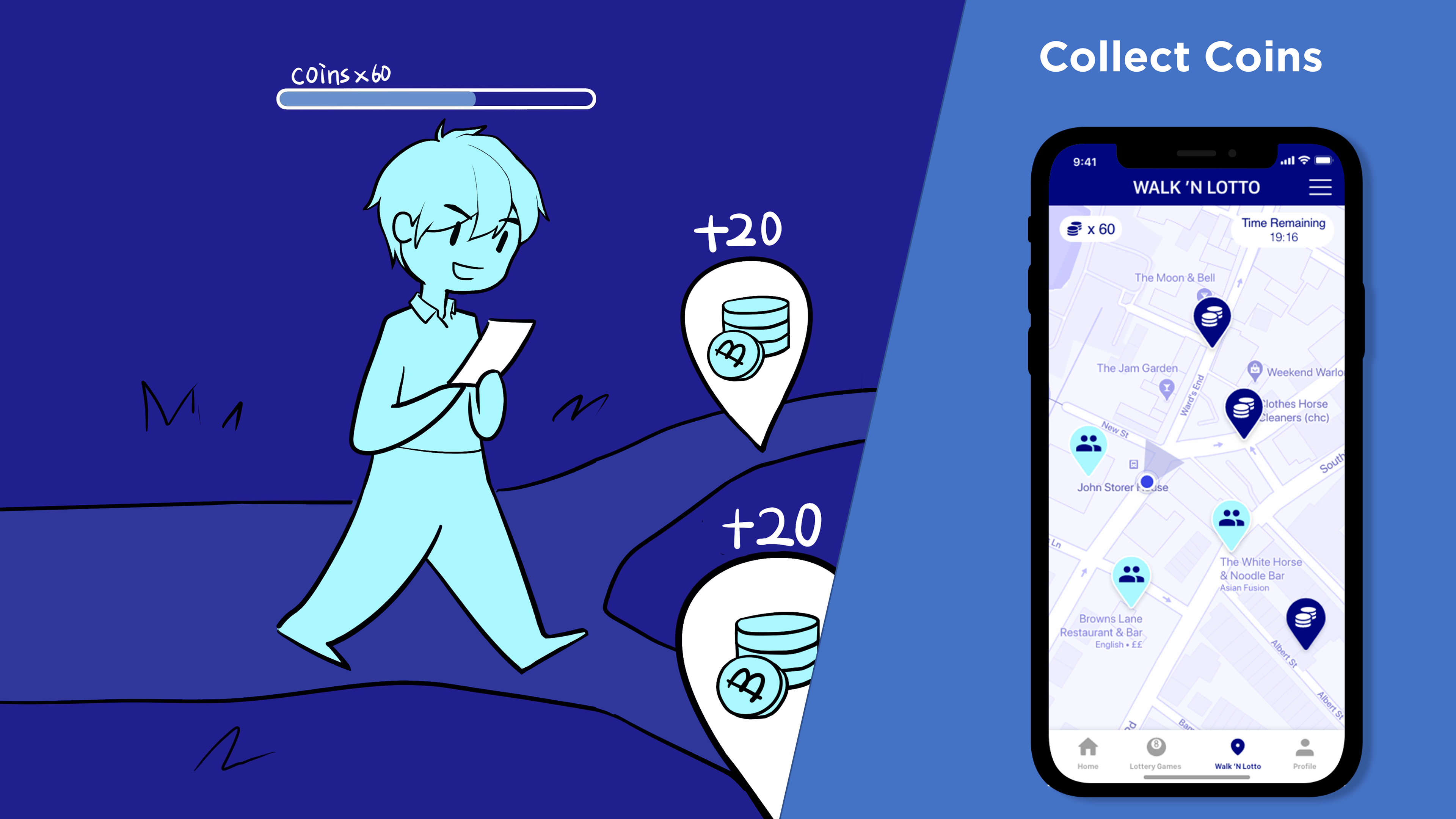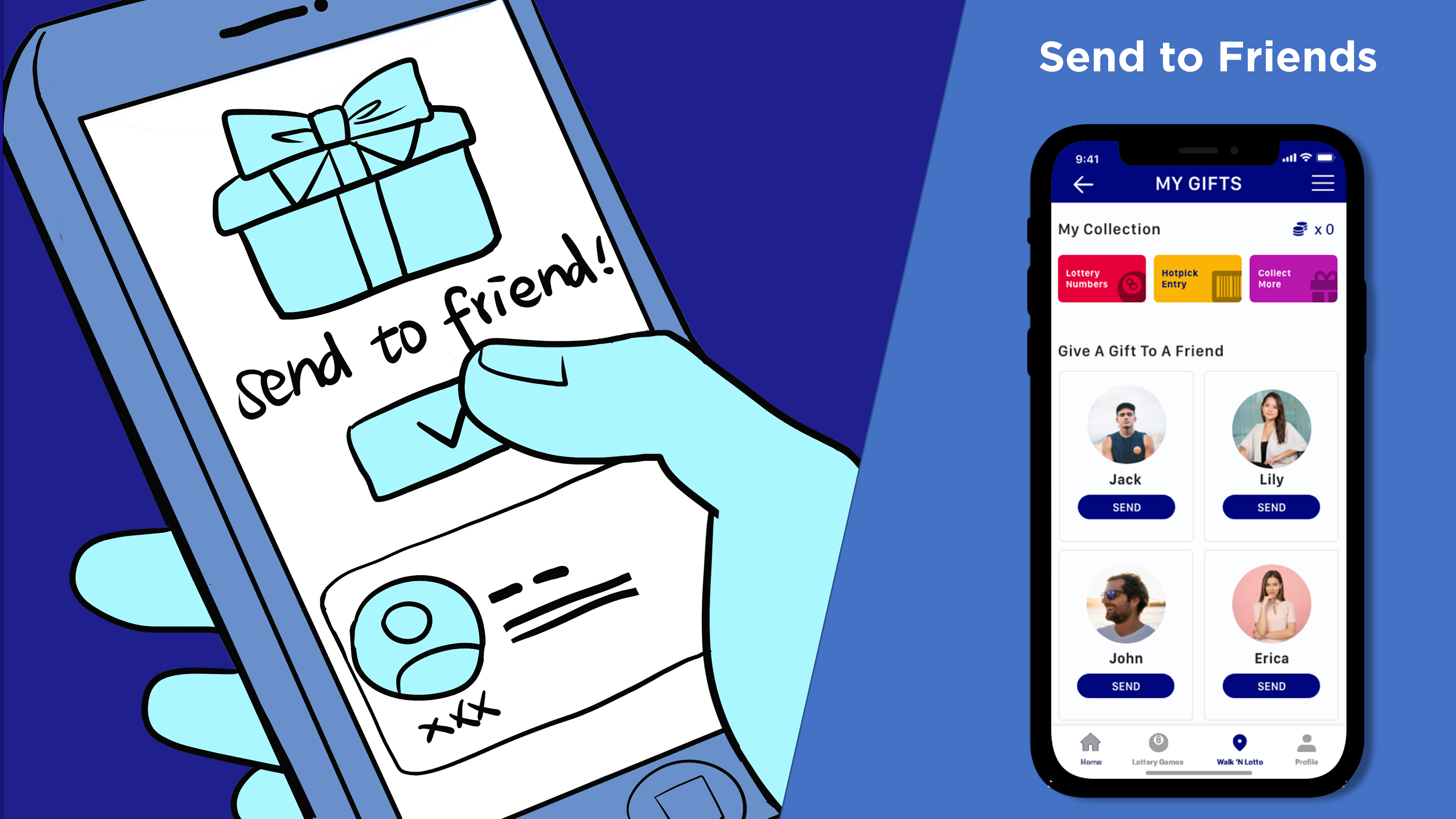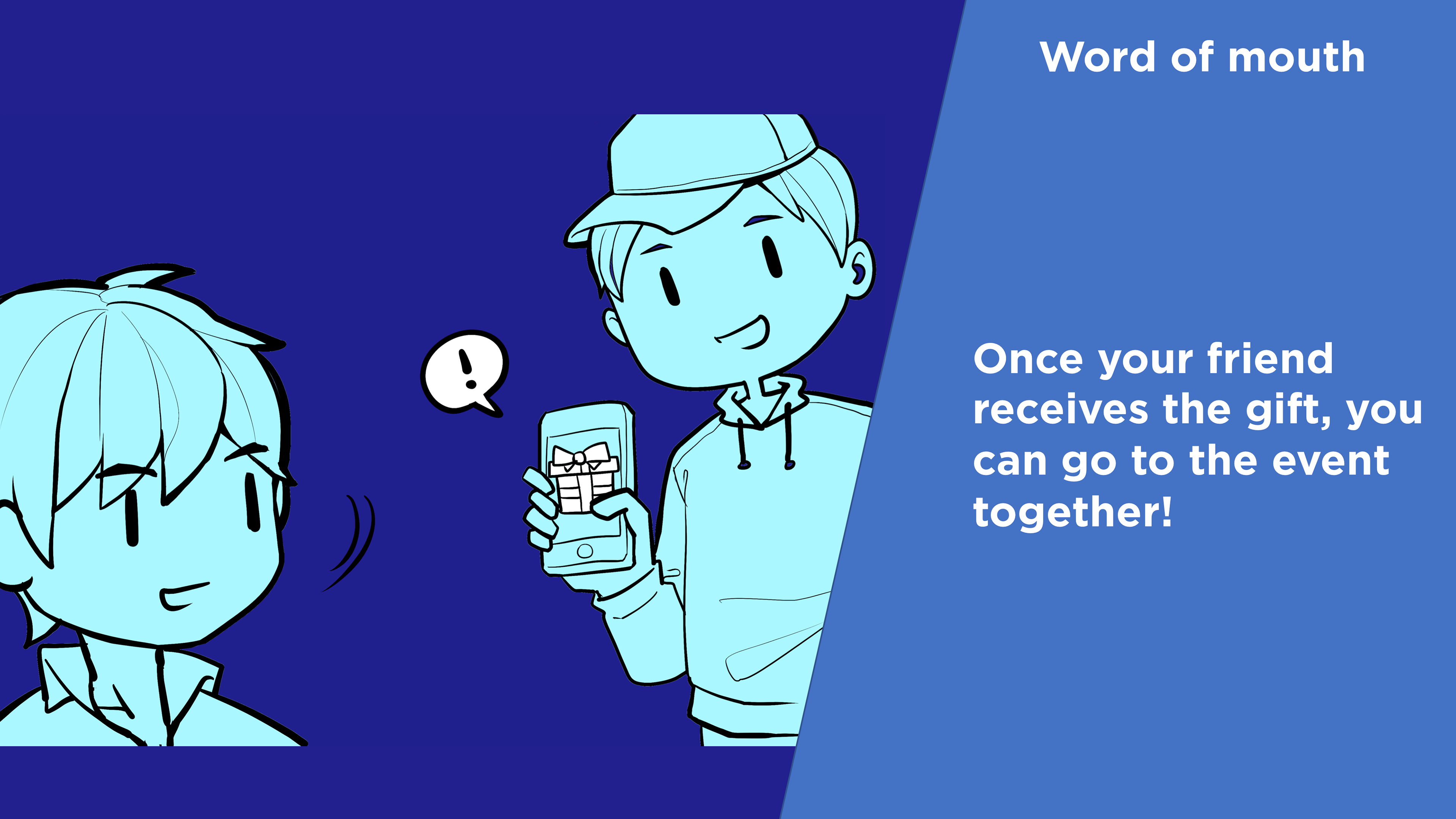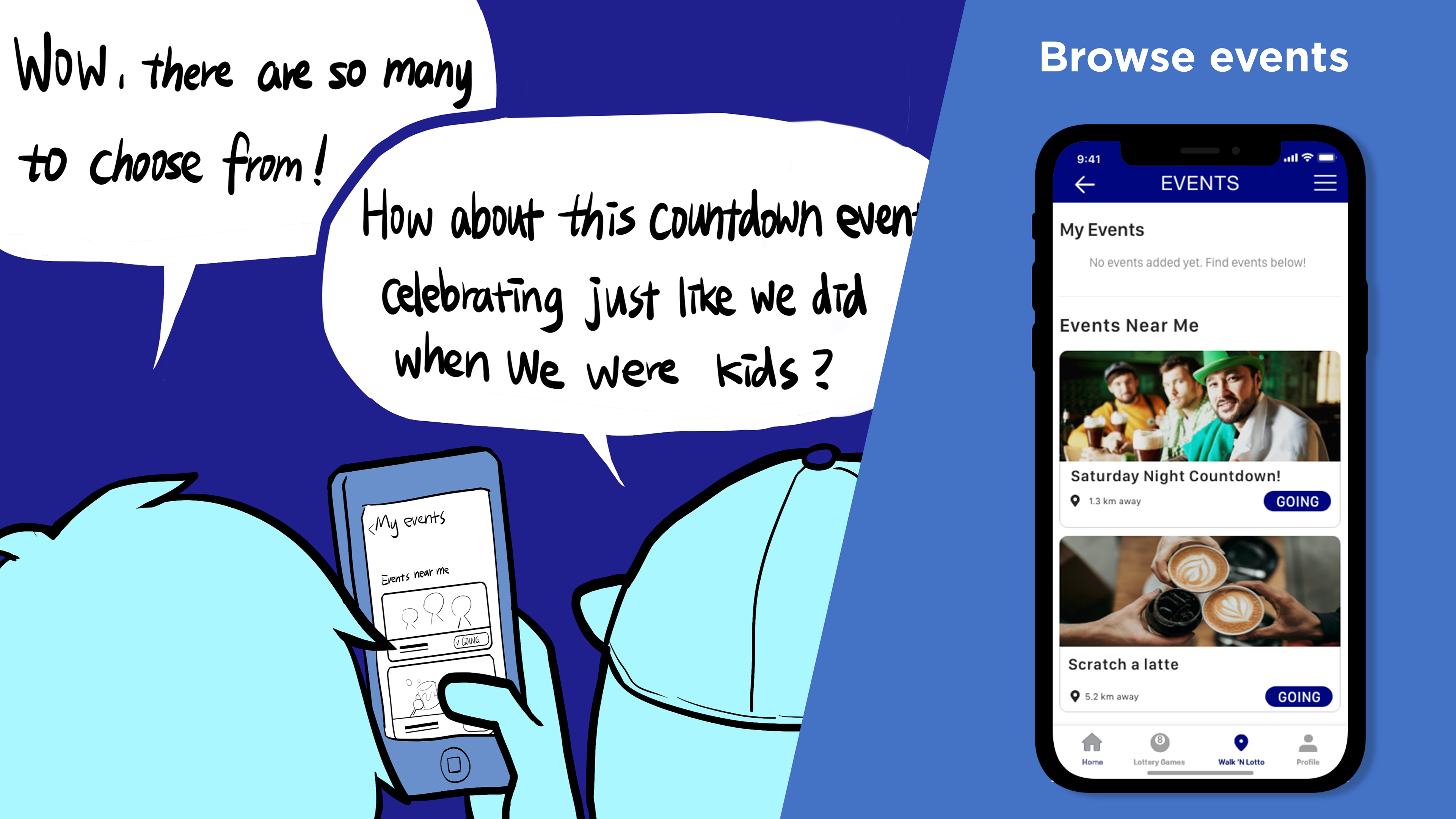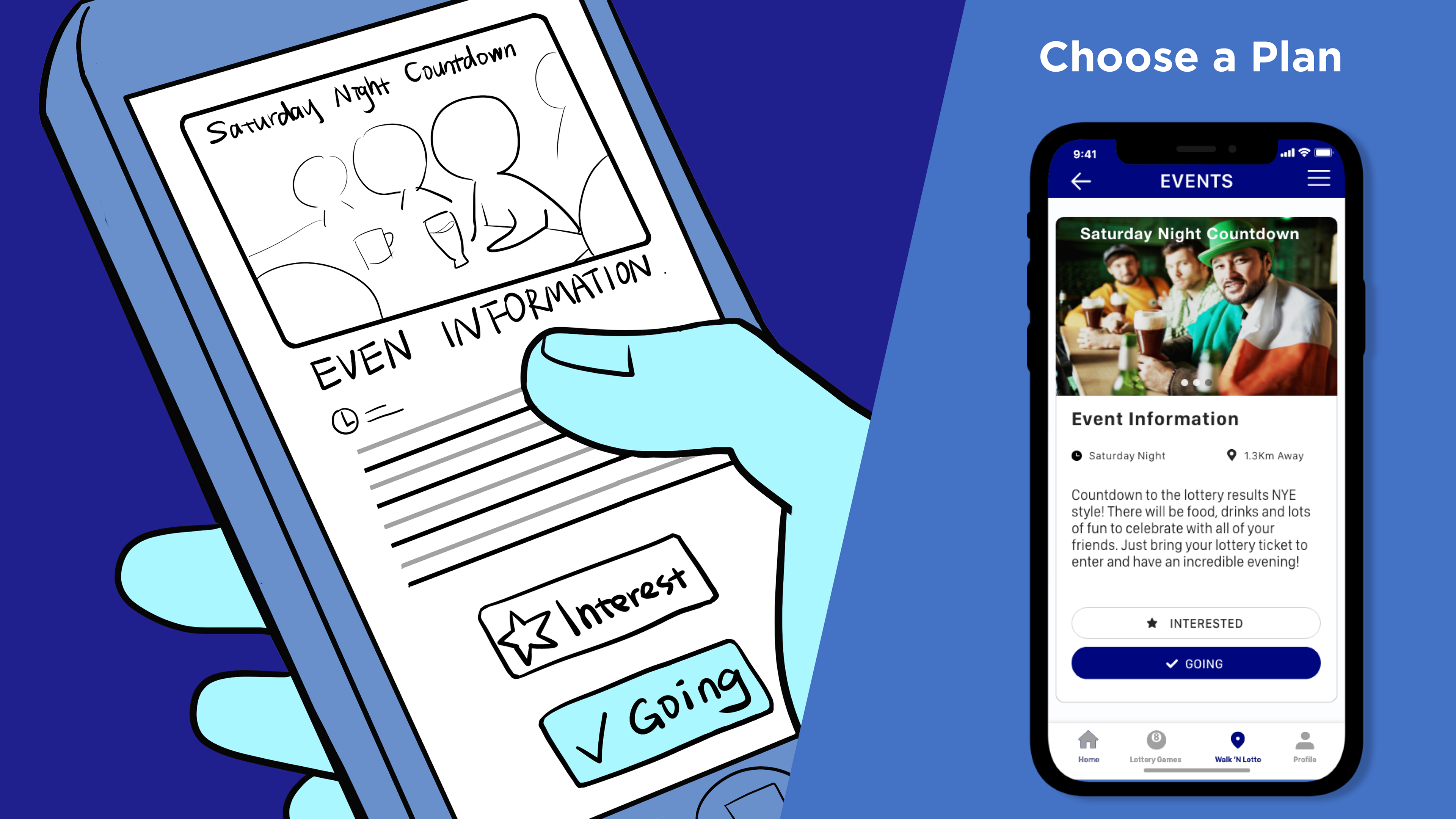Year: Spring 2020
Duration: 12 weeks
Client: Camelot
Project Type: Group - 6 Team Members
Role: Team-to-Client Correspondent, User Researcher, UI Designer
Tools: Adobe: XD/InDesign/Illustrator
Brief: "How might we evolve the lottery results journey - from the moment of the ticket purchase to the win or lose experience?"
BACKGROUND
For ten weeks, our team of Loughborough UX Design Master's students partnered with CAMELOT, the official operator for the National Lottery (UK), to research and improve the lottery experience. As 'Implementer', I served as the team's spokesperson, frequently corresponding with our client to document and communicate the entirety of our design process. Additionally, I co-led the digital design of our final concept with our team "Coordinator."
THE PROBLEM
Because winning the lottery is an extremely rare experience, active participants frequently feel disappointed and disengaged. While frequent play has been made easy with direct deposit features, players want to experience that 'winning feeling', even if it doesn't mean receiving the big cash prize.
Approaching this problem required extensive research and consideration for ethics around playing the lottery. As designers, it was imperative that we find ways to increase user engagement within the lottery app and improve the user's emotional experience, without increasing the amount of lottery tickets purchased.
SECONDARY RESEARCH
In conducting extensive research, we wanted to get a holistic sense for Camelot and the lottery experience. Through our research, we looked at similar experiences to the lottery to identify aspects that are successful and could inspire our idea. We also investigated the financial side of the lottery, looking at both gambling commission and how Camelot allocates their money to good causes. Lastly, we looked at Camelot’s competitors, both within the UK and also lotteries in other countries.
ETHNOGRAPHIC RESEARCH
After conducting secondary research, we formed an initial hunt statement: “We are going to research UK Nationals with a stable financial income who play the lottery on a regular basis, in order to make the waiting process from “pay to play” to the results “check” a more engaging and enjoyable experience.”
With our hunt statement and brief guiding our primary research, we began conducting primary research. These methods included conducting participant interviews and experience mapping, and engaging in auto-ethnography. While we wanted to focus on older lottery players, we ultimately focused on participants within the age range of 30 - 60. Because we had limited access to people playing the lottery, we wanted to remain as open as possible to gathering information from all types of players. Very quickly, we discovered that our participants fell into two categories: those who play irregularly and purchase physical lottery tickets, and those who play regularly and play through the digital app.
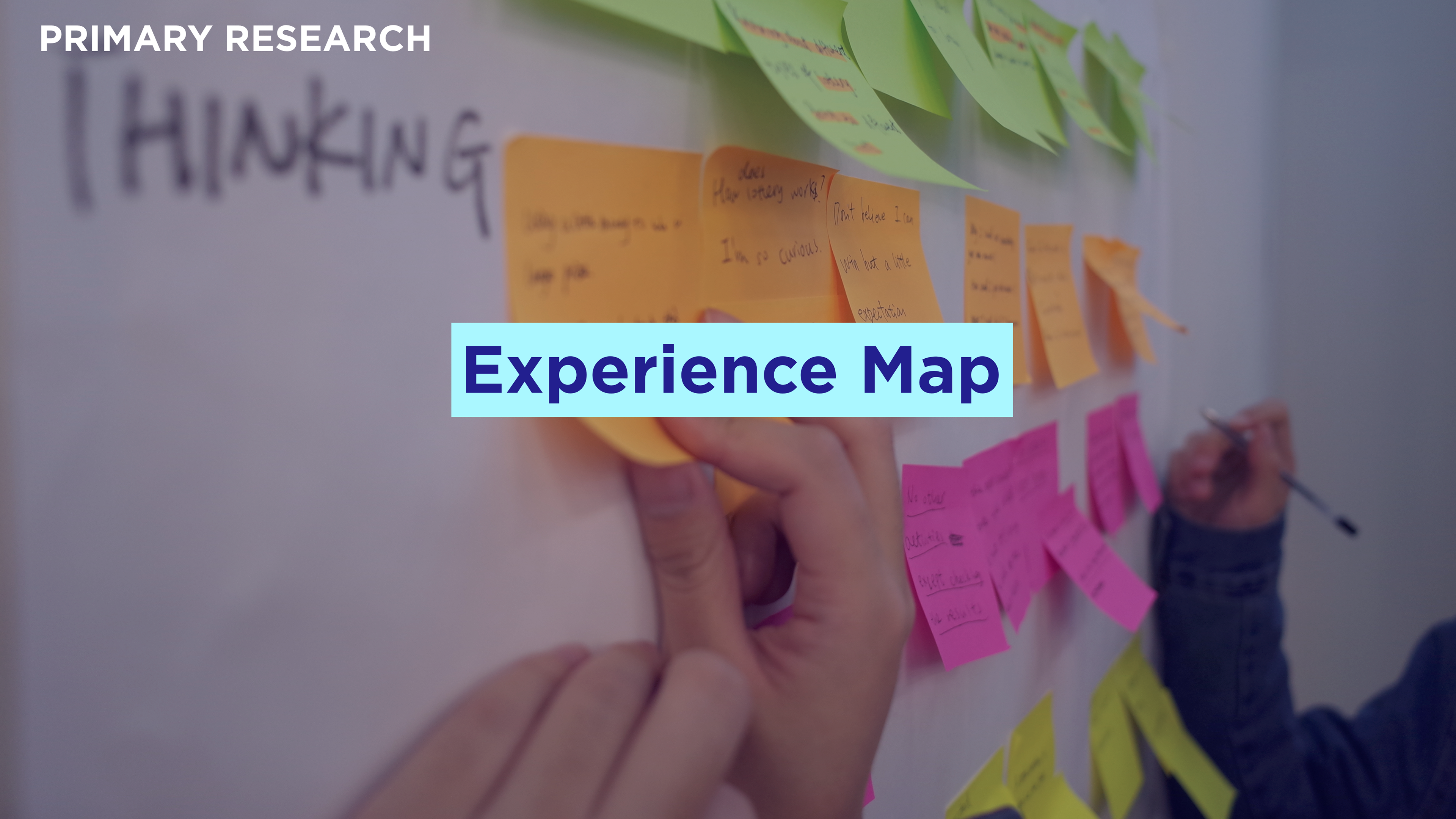


Experience Map: In addition to our interviews, we used the experience map method to tap into the emotional aspects of playing the lottery. With this process, we asked participants to share their emotions before purchasing a ticket, during the gaming experience, including the wait time, and after learning of the results.
Autoethnography: To gain better insight into the lottery experience, our group members purchase lottery tickets to help gain firsthand knowledge and insight into the aspects of the lottery that run smoothly, and conversely, those that could use improvement. This experience also helped us make sense of the information we gathered from our participants.
Observation and Staff Interviews: To gain outside perspective, we also spoke with retailer staff and conducted our own observations within the retail stores to see how people are perceived when playing the lottery. This served as a complementary method to our interviews and experience mapping, and helped us gain a more objective perspective regarding the lottery.
SYNTHESIS
Using a number of primary research methods helped us triangulate the information we gathered and begin to synthesize it, as we moved into the Define stage of the double diamond process.
To organize all of our gathered information, we used the affinity mapping process. We started out by printing all of the interesting quotes from our interviews, and then organized them into groups based on commonalities. From our affinity map, we realized that most of the irregular players we interviewed are younger, so the information we gathered prompted us to focus on how we could encourage younger players, between the ages of 24-35, to play more regularly.
FINDINGS & INSIGHTS
From our research, we identified three emerging themes: Tradition, Community and Hope. Further analysis of these themes led to identifying the main findings and insights.
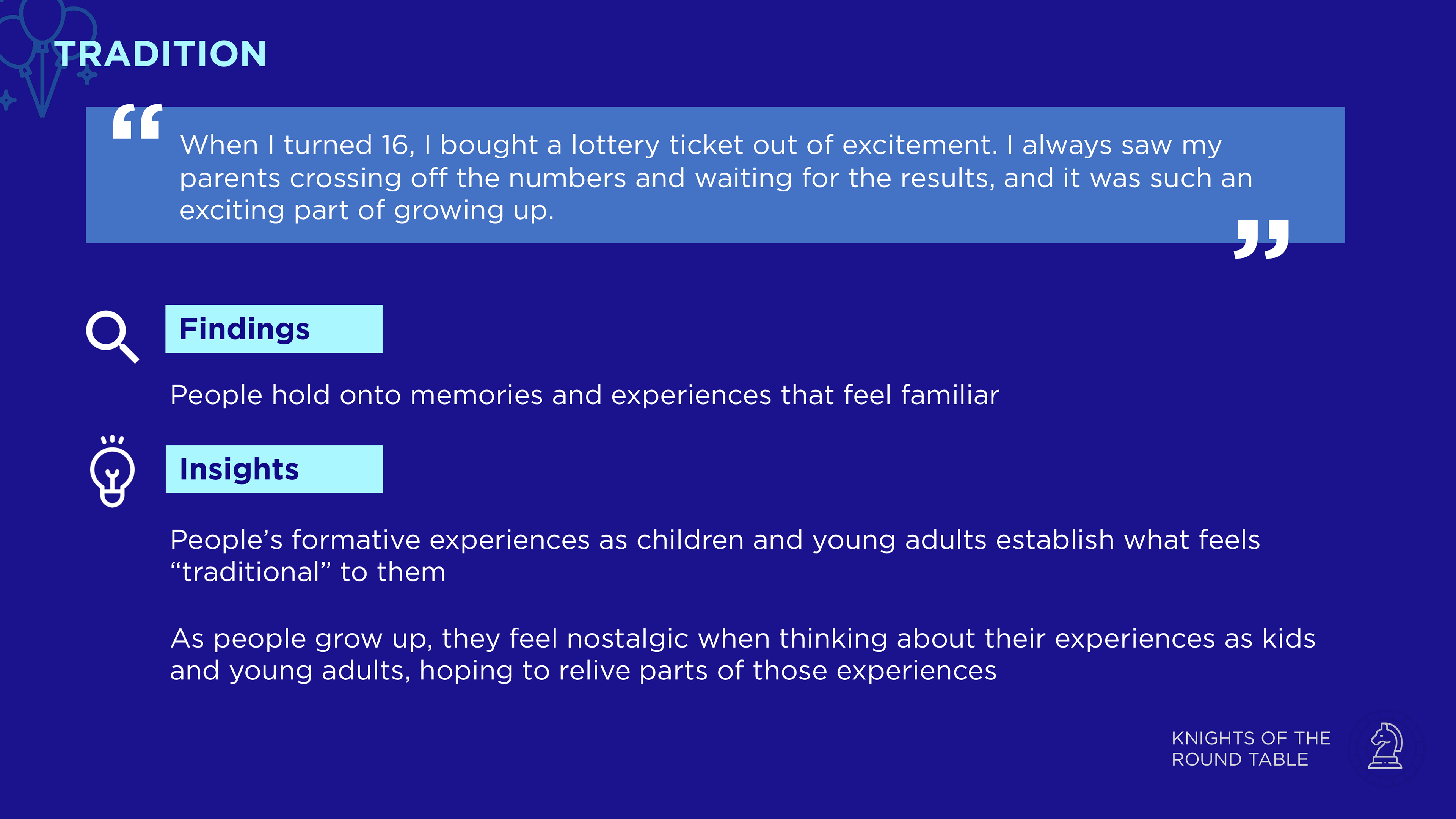

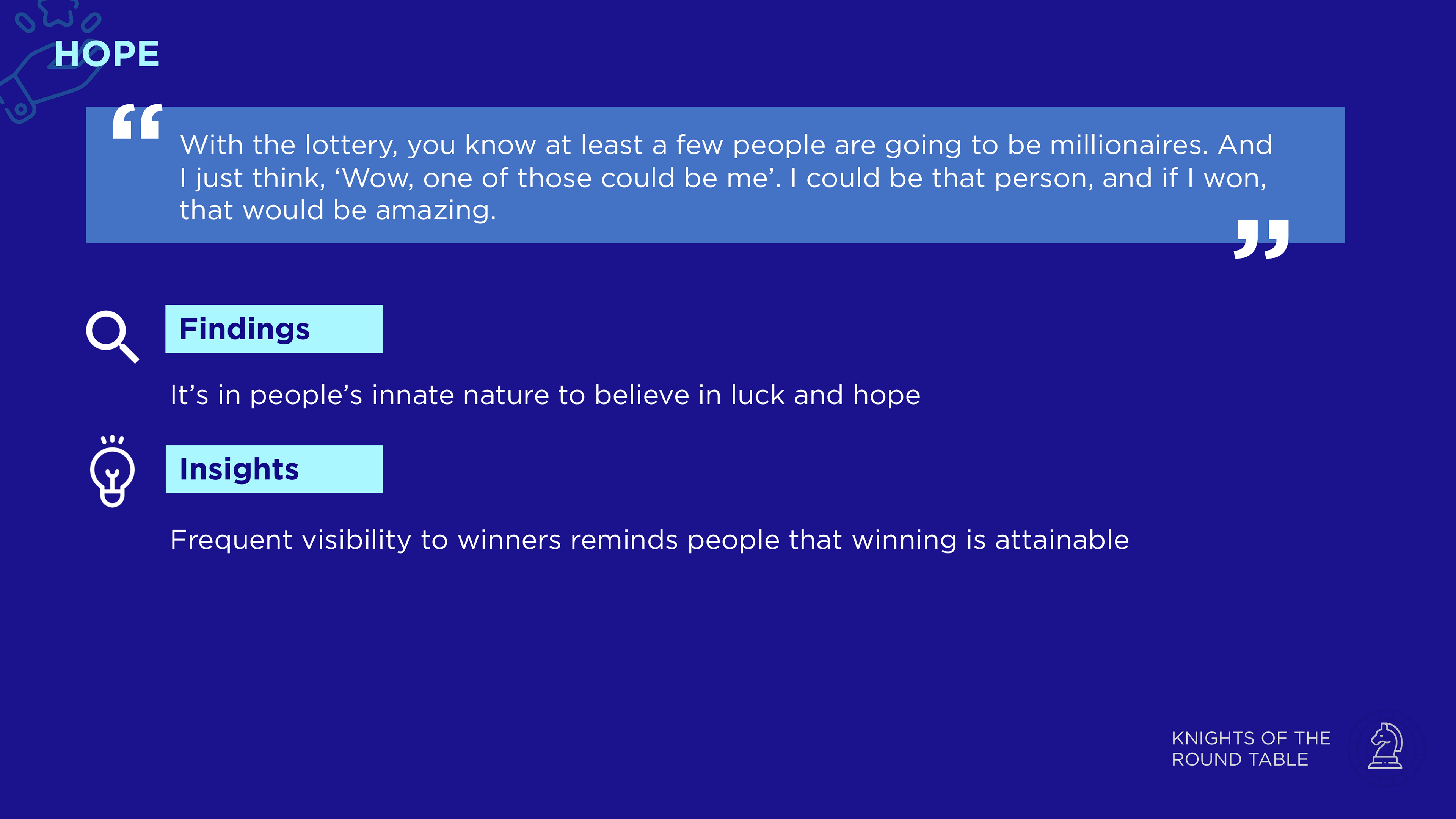
TARGET USER
From our findings and insights, we were then able to create our personas, which feature two types of lottery players we identified. Those who play regularly through the digital experience, and those who play irregularly through the physical experience.
Regular Player: Anna Sunders is a regular lottery player. She is set up with direct debit, which is an easy-to-use payment method. However, using direct debit has removed the excitement and anticipation in playing the lottery. Because the application only notifies her if she’s won, she doesn’t feel the need to engage with the app beyond her monthly payment, leaving her feeling distant and not engaged.
Irregular Player: Jamie Hudson is an irregular lottery player. Jamie plays the lottery only a couple times a year, as he feels skeptical about the odds of winning and disappointed when he loses. He often thinks about watching his parents play the lottery when he was a kid, what it was like to see them hopeful and excited when watching the live results. He wishes that he could relive the lottery gaming experience the way he remembers it when he was young.
ANALYSIS
With all of our research synthesized and our two personas in mind, we then moved into the analysis phase.
HMWs: We started our brainstorming process by generating 60 “How Might We” statements, and then began narrowing in on ideas that best fit our hunt statement and the brief Camelot provided us. We then chose the most applicable HMW statements based on our sweet spot matrix, which helped us organize these statements with two criteria in mind: improving the user experience and how we can keep users engaged.
Crazy Eights: With these 6 HMW statements in mind, we then did a storyboard exercise to express 8 ideas visually in 8 minutes, in order to fully optimize each group member’s creative thought process. We then organized all of these ideas and narrowed in on the aspects that best fit our insights and HMW statements, while still keeping in mind our design challenge within the brief.


OPPORTUNITIES
So with all of our research gathered and making sense of our data, we identified several opportunities for improving the lottery experience. These opportunities served as the framework for creating our final design. With all these features in mind, we put together all the ideas as a group and created a final design solution.
FINAL DESIGN
Walk ‘N Lotto is an interactive game available to players who have purchased a lottery ticket provided by the existing CAMELOT app. Users can play anytime up to the results day, with regard to their purchased ticket.
The game consists of a location-based map that highlights virtual rewards and events in the user's area. Rewards are in the form of collectable coins that can then be exchanged for lottery related rewards that benefit players and/or their community. Lottery-sponsored events will be centered around the "Good Causes" they currently sponsored by CAMELOT, encouraging players to volunteer and get involved within their communities. By creating community and encouraging responsible play, Walk 'N Lotto helps increase user engagement without increasing the amount of money required for users to enjoy this feature. This concept helps players come together, give back and experience that 'winning feeling' every time they play!
